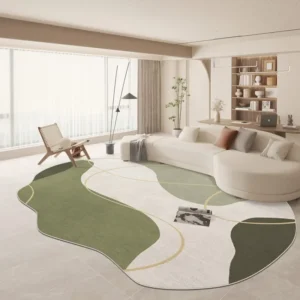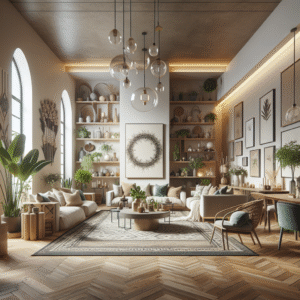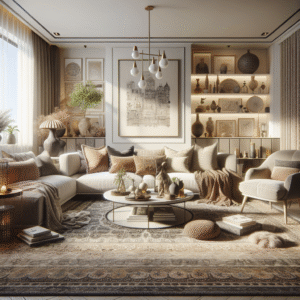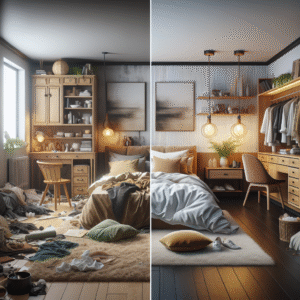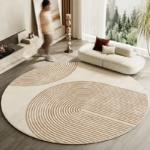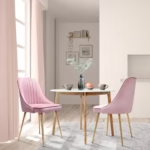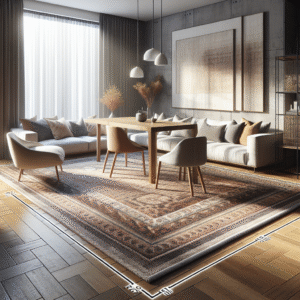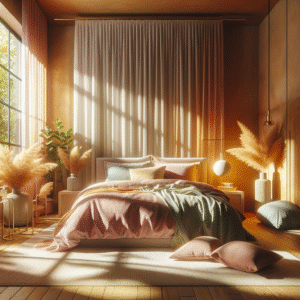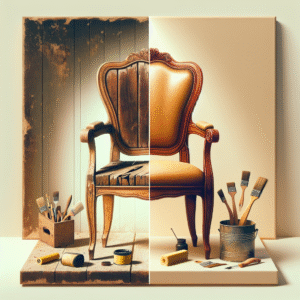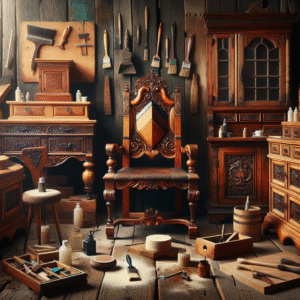Bold and Beautiful: Unleashing Creativity Through Unexpected Color Combinations
<h2>Why Colors Matter More Than You Think</h2>
<p>You know what? Colors are more than just shades and tints; they can evoke feelings, trigger memories, and even influence decisions. Ever walked into a room painted in calm blues and felt an instant wave of tranquility? Or how about a bright yellow that just screams cheerfulness? This goes beyond psychology—it taps into our very human experiences.</p>
<h2>The Psychology of Color: A Primer</h2>
<p>Here's the thing: every color carries its own psychological baggage. For instance, red can stir up passion or anger, while green beckons nature and unspoiled growth. This isn't just fluff—scientists have studied this extensively! Just think about how brands like Coca-Cola and Starbucks carefully select their colors to resonate emotionally with you. Isn’t that fascinating?</p>
<h2>Breaking the Mold: The Power of Unexpected Pairings</h2>
<p>Now, let's talk about why daring to mix colors in unexpected ways can really set you apart. Gone are the days of rigid color schemes that insist that green must go with brown or blue must be paired with gray. Plopping a fiery orange next to a calming lavender, or even a bold teal near a soft peach, can create dynamism that captures attention. It’s like a dish that surprises your taste buds—who doesn’t crave that? </p>
<h2>Creative Industries That Dare to Explore Color</h2>
<p>From graphic design to interior decorating, creative professionals are beginning to understand that the rules can be bent. In fashion, designers like Giambattista Valli are known for their striking choices, like mixing floral prints with geometric patterns. Can we take a nod from these trendsetters? Absolutely! It’s all about giving yourself the freedom to experiment.</p>
<h2>Real-World Examples That Inspire Us</h2>
<p>If you want proof that unconventional color pairings can be breathtaking, just look at some of the works by modern artists. Take, for instance, the vibrant canvases of Yayoi Kusama, whose polka dots clashing with bold colors compel audiences to stop and stare. Even in architecture, buildings painted in contrasting colors can transform a mundane cityscape into a gallery of art. So why not draw inspiration from these masters?</p>
<h2>Color Theory: A Kaleidoscope in Your Toolbox</h2>
<p>Delving a bit deeper into color theory, mixing primary colors can yield surprising secondary hues and beyond. Ever heard of analogous colors? They sit next to each other on the color wheel and harmonize beautifully. But mixing complementary colors? That can spark some serious excitement! It’s like creating your own symphony of visual appeal. Ever try a cobalt blue with a vibrant orange? The result can be electrifying!</p>
<h2>Cultural Influences on Color Perception</h2>
<p>Colors aren’t just universal; they’re steeped in cultural significance. In some cultures, white symbolizes purity and peace, while in others, it mourns loss. Exploring these cultural dimensions adds layers to how we approach color combinations. The interplay of colors might even tell a story, resonating with communities on a deeper level—doesn’t that sound intriguing?</p>
<h2>Practical Tips for Mixing Colors Boldly</h2>
<p>Alright, let’s get practical! Here are some approaches to spice up your color game:</p>
<ul>
<li>**Start with one bold color**: Pick a primary color you love and build from there.</li>
<li>**Embrace the color wheel**: Reference complementary and analogous colors for a harmonious effect.</li>
<li>**Less is more sometimes**: Balance bold choices with neutrals; think a bright cerulean with soft grays.</li>
<li>**Experiment and iterate**: Don’t be afraid to play! Sometimes unexpected combinations emerge from trial and error.</li>
</ul>
<h2>The Role of Technology in Color Exploration</h2>
<p>With the rise of digital tools, mixing colors has never been easier! Design software like Adobe Color or Canva allows you to play around with palettes endlessly. Isn’t it cool that a few clicks can take you from a dull scheme to an eye-catching masterpiece? There’s something genuinely satisfying about looking at a digital canvas and knowing you can reshape it at will.</p>
<h2>Seasonal Inspirations: Color Trends to Watch</h2>
<p>Speaking of trends, let’s not forget how seasons influence color choices! Spring often brings pastels and bright florals, while autumn anchors itself in rich earth tones. Designers often tune into these seasonal shifts, making unexpected combinations that challenge our norms yet feel refreshingly appropriate. So what colors are you drawn to this season?</p>
<h2>Communicating Emotion Through Color</h2>
<p>When you think about it, color isn’t just aesthetic. It communicates. Just picture a deep burgundy—it might evoke feelings of warmth and comfort. Throw in a splash of metallic gold, and suddenly it can feel luxurious and bold! What story do you want your colors to tell? That’s the challenge and the excitement!</p>
<h2>Step Outside Your Comfort Zone</h2>
<p>At this point, you might be nodding along but still hesitating. Here’s a gentle nudge: step outside your typical palette! Mix and match like it’s a jigsaw puzzle; you may create something stunningly unexpected. Remember, the beauty of color lies in its ability to surprise, so why not let go of those self-imposed color constraints? </p>
<h2>Wrap-Up: Bold Colors Await!</h2>
<p>In the grand tapestry of creativity, color is the thread that weaves it all together. The surprises in color combinations not only elevate designs—they also add layers of emotional resonance. So, take this newfound knowledge and let it inspire your creative journey. Experiment, push boundaries, and don’t forget to have fun along the way! </p>
<h2>Frequently Asked Questions</h2>
<div class="faq">
<button class="faq-question">**What are some unexpected color combinations I can try?**</button>
<div class="faq-answer">
<p>Some interesting combinations include teal and maroon, mustard and gray, or even coral with navy.</p>
</div>
<button class="faq-question">**How do colors affect mood?**</button>
<div class="faq-answer">
<p>Colors can evoke various emotions; for instance, blue often induces feelings of calmness while red can increase energy.</p>
</div>
<button class="faq-question">**Can color influence buying decisions?**</button>
<div class="faq-answer">
<p>Absolutely! Brands carefully choose colors that resonate with customer emotions to drive interest and sales.</p>
</div>
<button class="faq-question">**How can I learn more about color theory?**</button>
<div class="faq-answer">
<p>Books on color theory and online courses can offer valuable insights and guidance for your creative endeavors.</p>
</div>
<button class="faq-question">**What if I don't have a good eye for color?**</button>
<div class="faq-answer">
<p>Practice makes perfect! Start small, experiment with palettes online, and trust your instincts.</p>
</div>
<button class="faq-question">**Why should I care about mixing colors?**</button>
<div class="faq-answer">
<p>Mixing colors enriches your creative expression, making your work relatable and emotionally engaging.</p>
</div>
<button class="faq-question">**How do cultural perspectives affect color choices?**</button>
<div class="faq-answer">
<p>Colors carry different meanings across cultures, affecting how they're perceived in design and art.</p>
</div>
</div>
<h4>DISCLAIMER</h4>
<p>This article is meant for informational purposes only and should not be interpreted as professional advice. Always consult an expert for personalized guidance.</p>
<script>
const faqs = document.querySelectorAll('.faq-question');
faqs.forEach(faq => {
faq.addEventListener('click', () => {
const answer = faq.nextElementSibling;
answer.style.display = answer.style.display === 'block' ? 'none' : 'block';
});
});
</script>Categories
- Accent Walls & Ceilings (14)
- Art Curation & Gallery (29)
- Bedding Style Trends (42)
- Bedroom Makeover (34)
- Bohemian & Eclectic Styles (14)
- DIY & Budget-Friendly Decor (13)
- Eco-Friendly Design (15)
- Furniture Care (33)
- Home Decor & Design Ideas (103)
- Home Wellness Spaces (14)
- Integrated Outdoor Living (13)
- Kids and Nursery Decor (14)
- Living Room Decor (34)
- Minimalist & Japandi Style (17)
- Mix & Match Techniques (33)
- Modern & Contemporary Design (13)
- Rug Sizing & Placement (33)
- Seasonal Home Decor (36)
- Small Space Solutions (18)
- Wall Art & Painting Tips (36)
Recent Posts
Recent Comments
Archives
Product Gallery
-
 Large Area Green Rugs for Bedroom Nordic Living Room Decoration Shaped Carpet Irregular Plush Lounge Rug Home Thick Washable Mat Rated 5.00 out of 5$57.07 – $359.83Price range: $57.07 through $359.83
Large Area Green Rugs for Bedroom Nordic Living Room Decoration Shaped Carpet Irregular Plush Lounge Rug Home Thick Washable Mat Rated 5.00 out of 5$57.07 – $359.83Price range: $57.07 through $359.83 -
 Nordic Style Rugs for Bedroom Morandi Living Room Decoration Carpet Large Area Geometry Lounge Rug Home Cloakroom Non-slip Mat Rated 5.00 out of 5$40.98 – $620.81Price range: $40.98 through $620.81
Nordic Style Rugs for Bedroom Morandi Living Room Decoration Carpet Large Area Geometry Lounge Rug Home Cloakroom Non-slip Mat Rated 5.00 out of 5$40.98 – $620.81Price range: $40.98 through $620.81 -
 Irregular Shapes Living Room Decoration Carpet Modern Style Rugs for Bedroom Home Thicken Plush Rug Fluffy Soft Lounge Floor Mat Rated 4.75 out of 5$58.00 – $360.83Price range: $58.00 through $360.83
Irregular Shapes Living Room Decoration Carpet Modern Style Rugs for Bedroom Home Thicken Plush Rug Fluffy Soft Lounge Floor Mat Rated 4.75 out of 5$58.00 – $360.83Price range: $58.00 through $360.83





